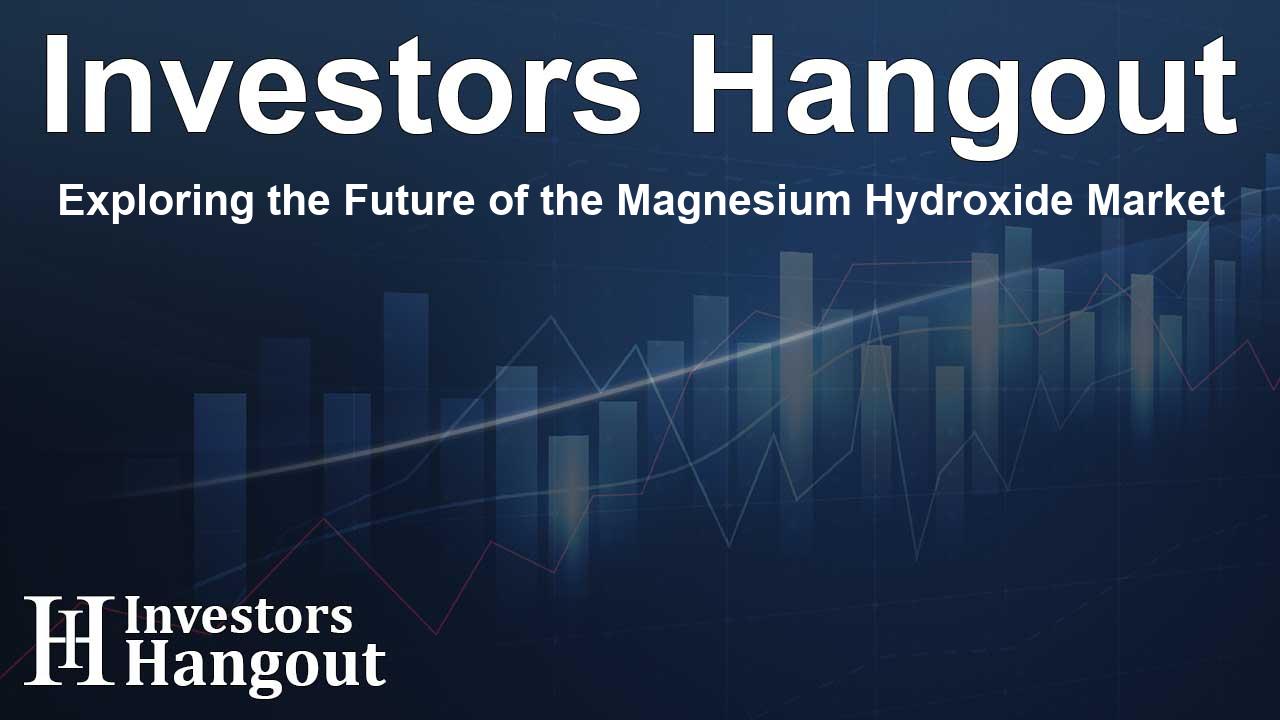Exploring the Future of the Magnesium Hydroxide Market

Magnesium Hydroxide Market: Outlook and Momentum
The magnesium hydroxide market is set for steady, durable growth. It’s projected to reach USD 1310.9 million by 2030, up from an estimated USD 933.1 million in 2024. That path reflects a compound annual growth rate (CAGR) of 5.8% from 2024 through 2030. Behind those numbers is a simple story: one material, many roles—and rising demand where safety, efficiency, and sustainability overlap.
Why Demand Is Building
Magnesium hydroxide is gaining traction because it solves practical problems across industries. It’s used in wastewater treatment, as a flame retardant, and in pharmaceutical products. Non-toxic and neutral toward acidity, it offers a cleaner profile than many traditional alternatives. For companies balancing performance with environmental goals, that combination makes it a reliable choice.
Environmental Standards and Regulatory Pressure
As water pollution concerns intensify and regulations tighten across many regions, magnesium hydroxide stands out for being effective and eco-friendly. Industries are adopting it to meet stricter discharge and safety requirements without adding hazardous materials to their processes. This regulatory push—paired with corporate sustainability commitments—continues to support market growth.
Safety-Driven Use Across Industries
Beyond wastewater treatment, magnesium hydroxide has become a mainstay in flame retardant applications. Construction and electronics manufacturers, in particular, prioritize materials that improve fire performance while keeping toxicity low. Magnesium hydroxide decomposes at high temperatures, releasing water that helps cool and suppress flames. Compared with halogenated materials, it offers an effective, non-toxic way to enhance safety in finished products.
Trends to Watch
Production methods are evolving. Advanced chemical synthesis is giving producers tighter control over purity, particle size, and overall product consistency. As end users impose stricter specifications, suppliers are using these techniques to deliver more predictable, high-quality grades tailored to specific applications. That alignment—between precise needs and precise materials—is a quiet but strong driver of market momentum.
Water Treatment: Practical and Compatible
In water treatment, magnesium hydroxide does two things well: it neutralizes acidic wastewater and helps remove heavy metals. Because it performs both functions while remaining non-toxic, it fits neatly into industrial treatment plans that prioritize worker safety and environmental compliance. With industries placing a premium on sustainable operations, demand is naturally tilting toward solutions like magnesium hydroxide that meet targets without compromising performance.
Pharmaceutical Use: Everyday Reliability
Pharmaceutical applications form another core part of the market. Magnesium hydroxide is widely used in antacids and laxatives, which keeps baseline demand steady. As lifestyle-related gastrointestinal issues become more common, and as healthcare access expands—especially in emerging markets—usage in medicinal formulations is expected to grow along with it. Dependable, familiar, and effective, it remains a staple ingredient.
Plastics and Rubber: Fire Safety With Fewer Trade-Offs
In plastics and rubber, magnesium hydroxide functions as a crucial flame retardant. Stricter fire safety rules and a preference for non-toxic additives are pushing manufacturers to adopt it more broadly. Beyond flame inhibition, it can contribute to durable formulations, helping products meet both safety and performance requirements. The result: a material that earns its place in designs where reliability matters.
Regional View: Different Needs, Same Pull
Growth looks different by region, reflecting local industries and policy landscapes. In North America, strong environmental regulations support steady uptake in water treatment and related applications. Across Europe, demand often flows from sustainability priorities and the push for safer material choices in manufacturing.
Asia-Pacific is expanding quickly, with industrial growth and construction activity—particularly in China and India—lifting consumption across multiple end uses. Latin America and the Middle East & Africa are also on a positive track, supported by growing industrial bases and infrastructure development that steadily broaden the application footprint.
Conclusion
Magnesium hydroxide is well positioned for continued growth. Its versatility across wastewater treatment, flame retardancy, and pharmaceuticals, paired with a non-toxic profile, aligns with where many industries are heading. As regulations tighten and product specs sharpen, demand is likely to keep building through 2030 and beyond—one material, many roles, chosen for what it does and what it avoids.
Frequently Asked Questions
What is the projected market size for magnesium hydroxide by 2030?
The market is projected to reach USD 1310.9 million by 2030, reflecting steady growth across core applications like water treatment, flame retardants, and pharmaceuticals.
What is the expected CAGR for the magnesium hydroxide market?
The expected compound annual growth rate is 5.8% for the period from 2024 to 2030, based on the increase from USD 933.1 million in 2024 to USD 1310.9 million by 2030.
In which industries is magnesium hydroxide primarily used?
It’s primarily used in wastewater treatment, as a flame retardant in applications such as construction and electronics, and in pharmaceutical products like antacids and laxatives.
How does magnesium hydroxide compare to traditional flame retardants?
Magnesium hydroxide is non-toxic and environmentally friendly. It inhibits flames by decomposing at high temperatures, making it a safer alternative to halogenated flame retardants.
Why is the Asia-Pacific region significant for the magnesium hydroxide market?
Industrial expansion and construction growth—especially in China and India—are driving broader use of magnesium hydroxide across applications, supporting the region’s growing share of demand.
About The Author
Contact Lucas Young privately here. Or send an email with ATTN: Lucas Young as the subject to contact@investorshangout.com.
About Investors Hangout
Investors Hangout is a leading online stock forum for financial discussion and learning, offering a wide range of free tools and resources. It draws in traders of all levels, who exchange market knowledge, investigate trading tactics, and keep an eye on industry developments in real time. Featuring financial articles, stock message boards, quotes, charts, company profiles, and live news updates. Through cooperative learning and a wealth of informational resources, it helps users from novices creating their first portfolios to experts honing their techniques. Join Investors Hangout today: https://investorshangout.com/
The content of this article is based on factual, publicly available information and does not represent legal, financial, or investment advice. Investors Hangout does not offer financial advice, and the author is not a licensed financial advisor. Consult a qualified advisor before making any financial or investment decisions based on this article. This article should not be considered advice to purchase, sell, or hold any securities or other investments. If any of the material provided here is inaccurate, please contact us for corrections.
